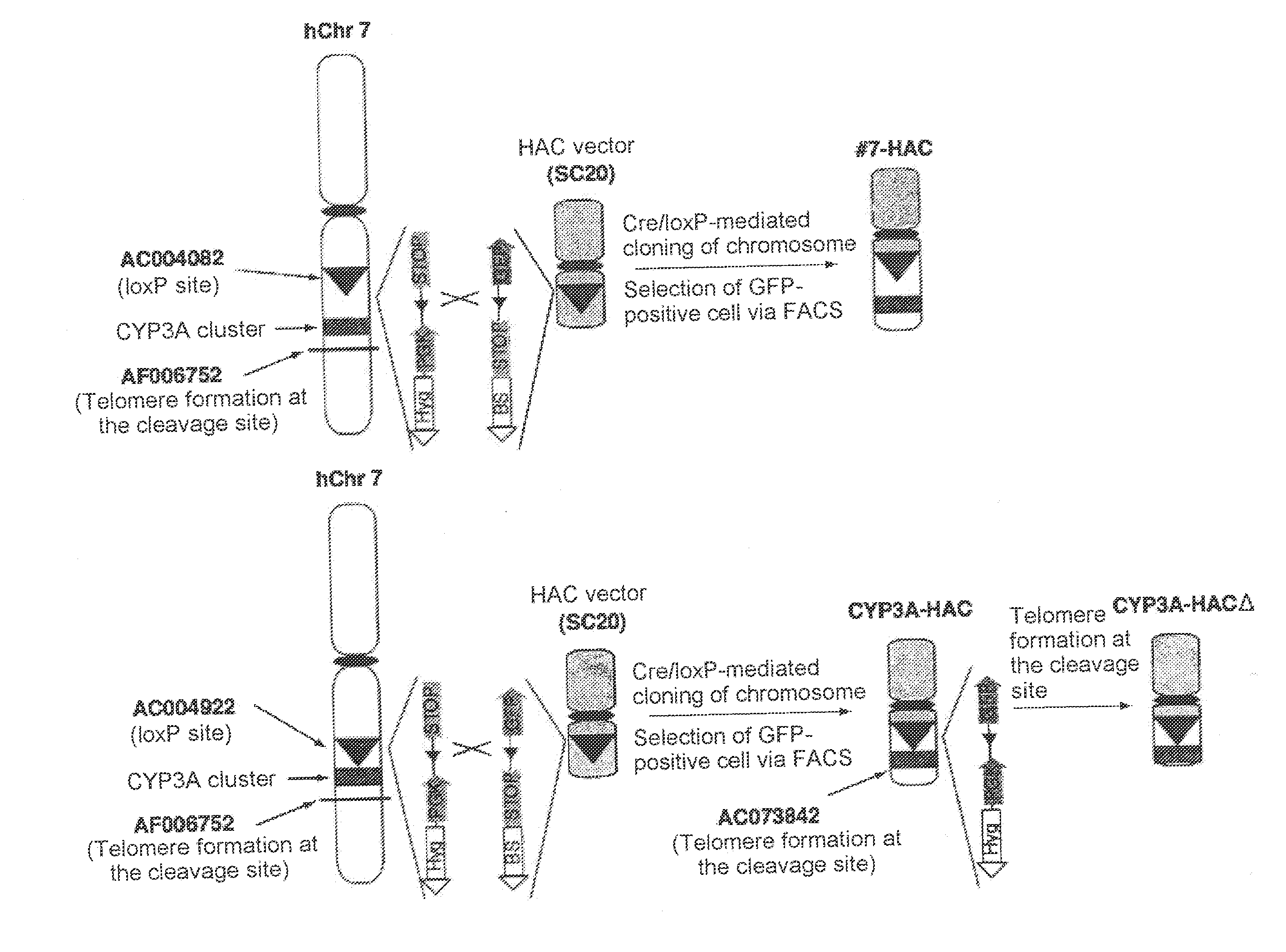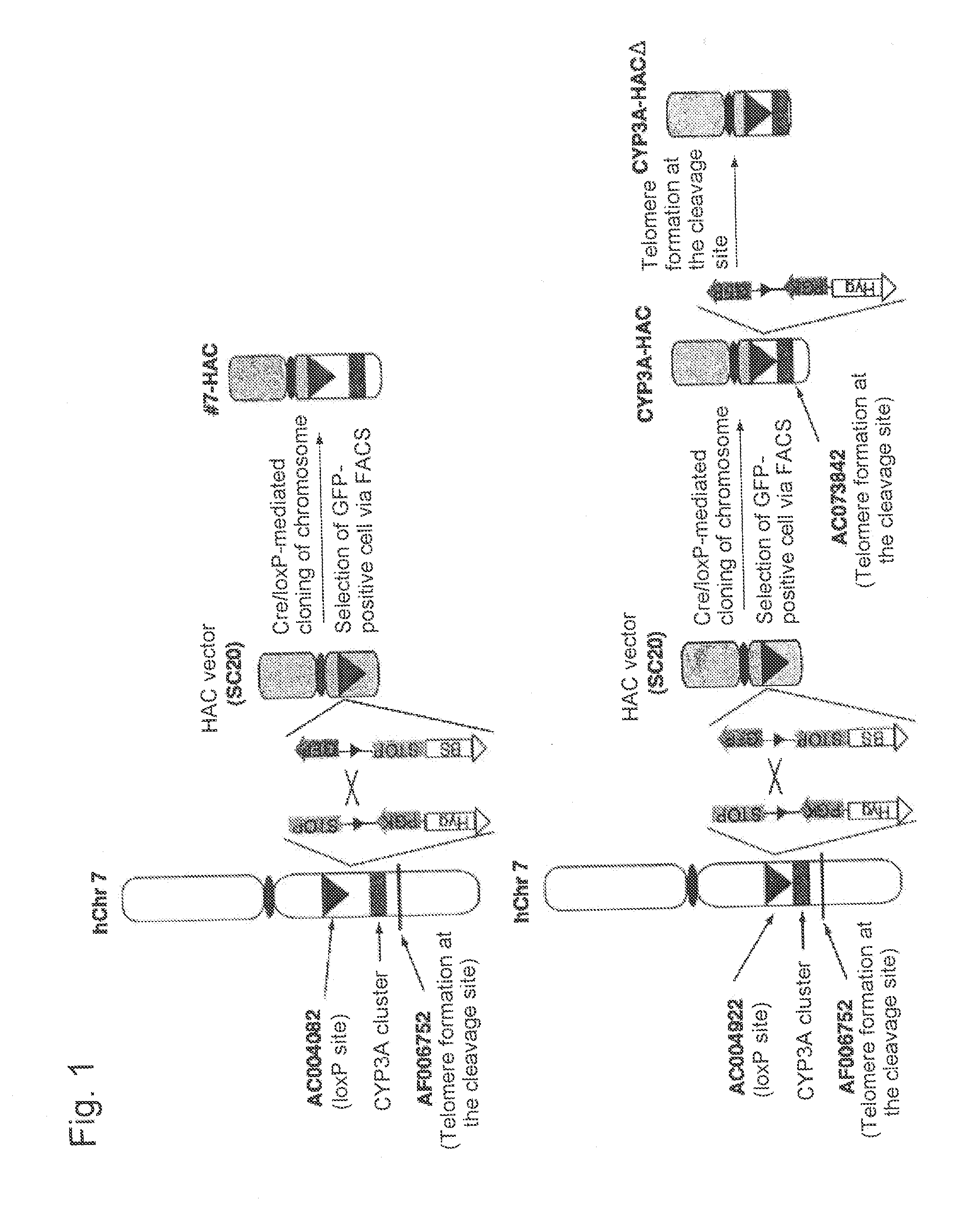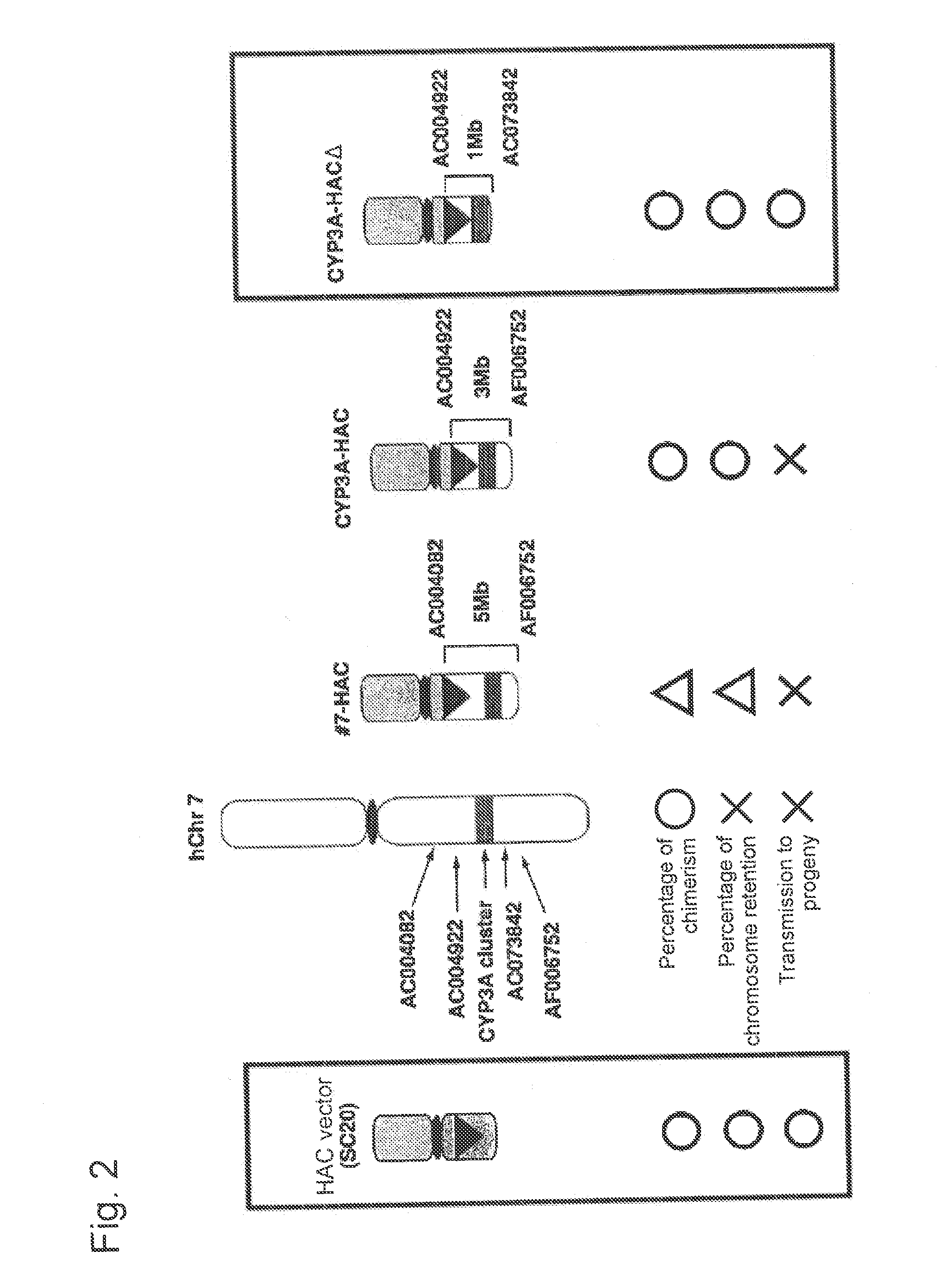Mammalian artificial chromosome vector comprising human cytochrome p450 gene (cluster) and non-human mammalian animal retaining the same
a technology of artificial chromosomes and cytochrome p450, which is applied in the field of mammalian artificial chromosome vectors, can solve the problems of inability to accurately understand the effect of metabolites on cells, difficult to obtain human hepatic microsomes, and inapplicability of information regarding the metabolism of certain drugs in rats
- Summary
- Abstract
- Description
- Claims
- Application Information
AI Technical Summary
Problems solved by technology
Method used
Image
Examples
example 1
Construction of Human Artificial Chromosome CYP3A-HAC Via Translocation and Cloning of 3 Mb Region in the Vicinity of Human CYP3A Gene Cluster (AC004922-Human CYP3A Gene Cluster-AF006752) into SC20-HAC Vector
[0148](A) Site-Specific Insertion of loxP Sequence into AC004922 on Human Chromosome 7
(A.1) Construction of Targeting Vector, pNPloxPHyg
[0149]A targeting vector (pNPloxPHyg) was prepared in the following manner, which was used for inserting a Cre recombinase recognition sequence (loxP) into the AC004922 region, which is located in the extreme vicinity of the CYP3A gene locus on human chromosome 7 and at a site of approximately 300 Kb from the CYP3A gene locus toward the centromere At the outset, the AC004922 genomic region was amplified by PCR using the following primers.
p4501oxP7L:5′-ggcctagagcctggactcattcattcaa-3′(SEQ ID NO: 1)p4501oxP7R:5′-gacagatgtcatgccccaggtaggtatg-3′(SEQ ID NO: 2)
[0150]V901 (Lexicon genetics) was used as a fundamental plasmid for inserting a loxP sequence...
example 2
Construction of Human Artificial Chromosome (CYP3A-HACΔ) Via Translocation and Cloning of 1-Mb region in the vicinity of human CYP3A gene cluster region (AC004922-human CYP3A gene cluster-AC073842) into SC20-HAC vector
[0178]An excessive region of approximately 2 Mb still remains between the CYP3A gene cluster and AF006752 in CYP3A-HAC. In order to completely remove an excessive chromosome region and selectively translocate and clone the CYP3A gene cluster region, construction of a human artificial chromosome (CYP3A-HACΔ) via translocation and cloning of an AC00492-human CYP3A gene cluster-AC073842 region of approximately 1 Mb into the SC20-HAC vector was attempted.
(A) Transfer of CYP3A-HAC into DT40
[0179]In order to efficiently modify chromosomes, CYP3A-HAC was transferred from CHO cells to DT40 cells exhibiting a high frequency of homologous recombination. In accordance with the method of Tomizuka et al. (Nature Genet., 16: 133-143, 1997), microcells were purified from about 108 CH...
example 3
Retention of CYP3A-HACΔ in Somatic Cell of TC(CYP3A-HACΔ) Mouse Strain
(3.1) Genome PCR Analysis
[0200]A male mouse (165) and a female mouse (155) of the TC(CYP3A-HACΔ) mice obtained above were subjected to PCR under the above conditions using the genomes obtained from the brain, the thymic gland, the heart, the lung, the liver, the kidney, the spleen, the small intestine, the muscle, and the spermary (or uterus) as templates and the primer for detecting the CYP3A gene cluster and the primer for detecting human chromosome 14. CYP3A-HACΔ was detected in all organs. Representative results of the female (155) are shown in FIG. 6.
(3.2) Fluorescent in Situ Hybridization (FISH) Analysis
[0201]As a result of FISH analysis using the individuals and tissues that were employed above by the method of Shinohara et al. (Human Molecular Genetics, 10, 1163-1175, 2001) using the human COT1 DNA probe, 55 to 95% of the individuals were found to retain CYP3A-HACΔ (FIG. 7). In the liver and the small inte...
PUM
| Property | Measurement | Unit |
|---|---|---|
| capacitance | aaaaa | aaaaa |
| voltage | aaaaa | aaaaa |
| diameter | aaaaa | aaaaa |
Abstract
Description
Claims
Application Information
 Login to View More
Login to View More - R&D
- Intellectual Property
- Life Sciences
- Materials
- Tech Scout
- Unparalleled Data Quality
- Higher Quality Content
- 60% Fewer Hallucinations
Browse by: Latest US Patents, China's latest patents, Technical Efficacy Thesaurus, Application Domain, Technology Topic, Popular Technical Reports.
© 2025 PatSnap. All rights reserved.Legal|Privacy policy|Modern Slavery Act Transparency Statement|Sitemap|About US| Contact US: help@patsnap.com



